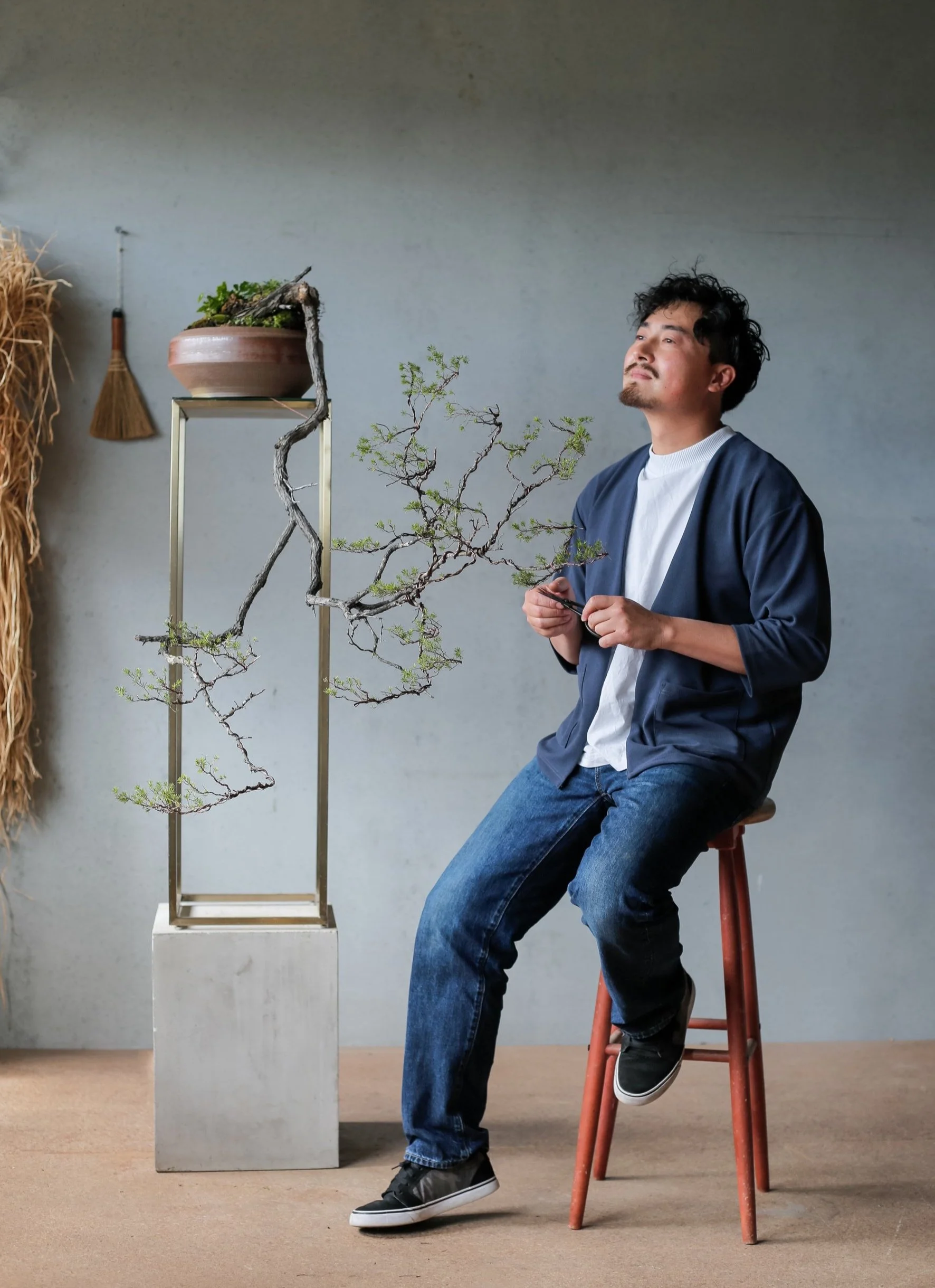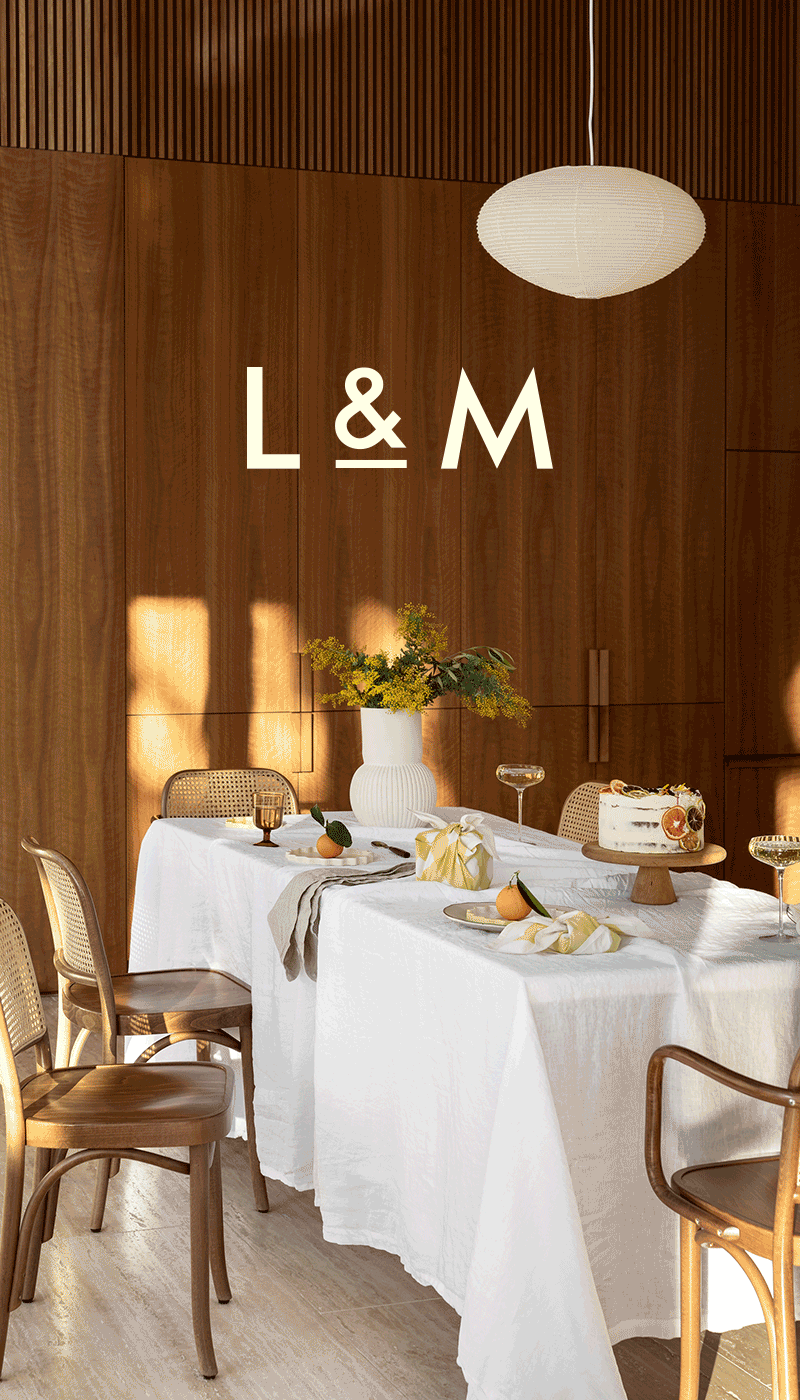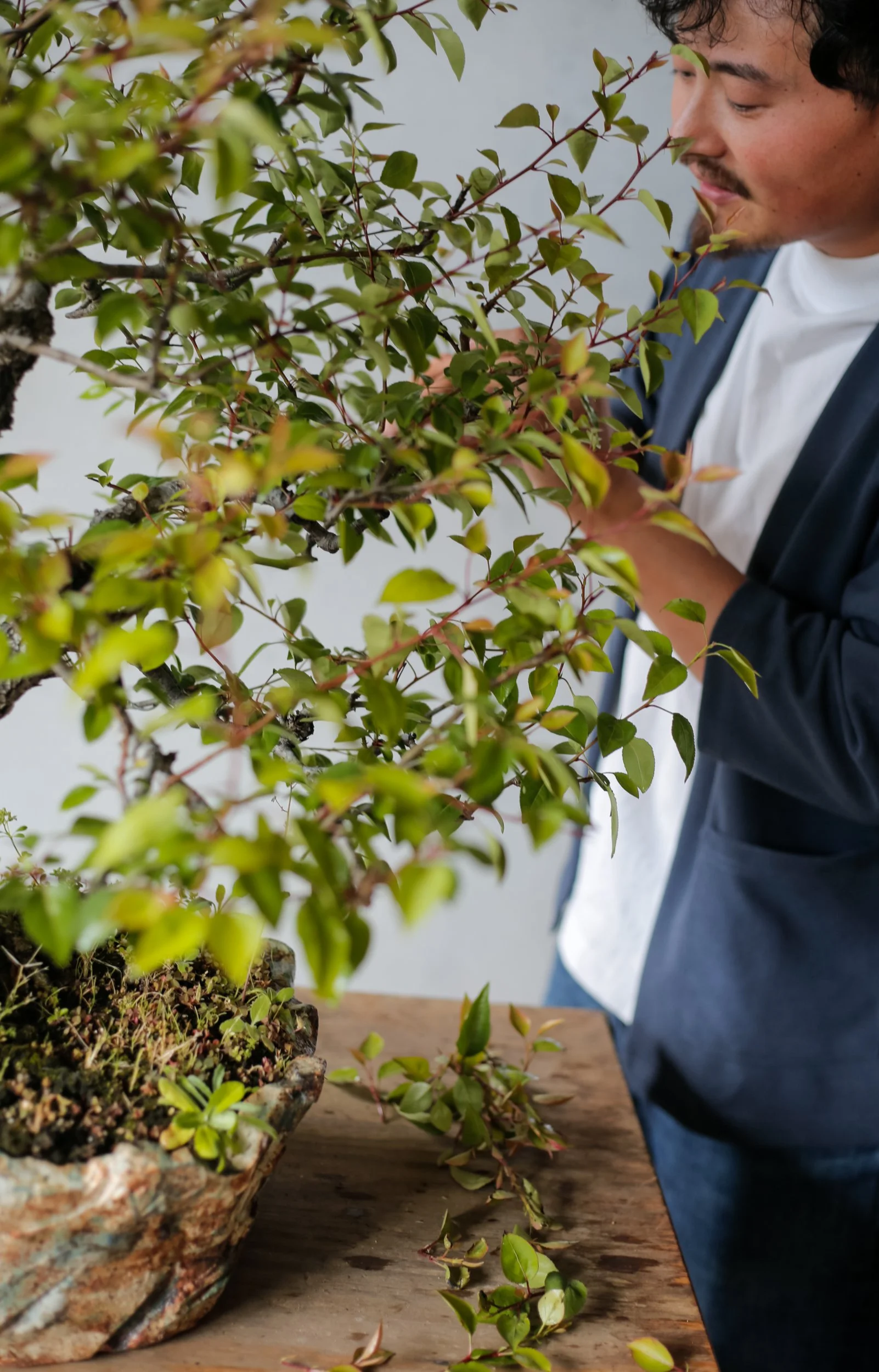Billy Ho Creates Beautiful Bonsais After Hours
Billy Ho from Tildy’s Bonsai is a designer by day and a masterful bonsai artist by night—we step into his studio, where valuable lessons of patience and impermanence gently guide his practice.
PHOTOGRAPHY: Hande Renshaw
Billy Ho, the artist behind, Tildy’s Bonsai in his studio in Sydney’s northern suburbs.
‘Bonsai has taught me that nothing is truly permanent. Appreciating the tree's current state and finding joy in the moment is just as important—because, in the end, it's the memories we create that truly stay with us.’
‘I've definitely learned a lot about patience through working with bonsai—the more I create and refine them, the more I realise how essential patience is to perfecting the art.’
Hello Billy—can you please introduce yourself?
My name is Billy, a Sydney-based industrial designer and bonsai artist from Tildy’s Bonsai. Additionally, I hold a pivotal role as the co-owner and chief operating officer of POP THIS—one the most awarded packaging and display design agencies in Australia. I am father of three beautiful kids: two boys and a girl, and a cute Japanese shiba dog. I’m married to a Japanese wife, and living in Sydney as a Japanese influenced family.
When did you first discover the art of bonsai design?
Bonsai is always there in most Asian cultures. When I was growing up, I would often see them in places we went and shows we watched. I guess it’s been embedded in my DNA since birth. I re-engaged with bonsai officially when my first child was born almost ten years ago, it was when I needed to seek stress relief and more calmness.
Why do you think it’s had such an impact on you?
It has a positive effect on my work and personal life. It’s given me time to self-reflect and de-stress and it has also given me lots of design inspirations for my day work, thanks to the creative work of mother nature. It is now part of my life and I need it daily.
How much time do you dedicate each week to your bonsais?
As much as I can possibility do. I wake up early to hand water each piece, which is my communication with them and I also come back to the workshop and work on them once my children have all gone to sleep—it is my moment of mental relaxation.
Tell us a little about the process a bonsai goes through…
Well, this is a hard one. One can start from seed/cuttings and go through years of waiting and growing before they become a workable material, some come ready to work on where I simply study, analyse and then develop the design direction from there with my own touch. Sometimes I even consult my industry peers and masters for advice on how to build up the design.
The basic process is—design form study, developmental stage, implementation, revision and refinement.
I imagine there’s a big lesson of patience and being in the moment when it comes to tending to your bonsais?
Yes, I've definitely learned a lot about patience through working with bonsai—the more I create and refine them, the more I realise how essential patience is to perfecting the art.
Any other valuable takeaways from the art of bonsai?
Apart from the lesson of being patient, bonsai has also taught me that nothing is truly permanent. Appreciating the tree's current state and finding joy in the moment is just as important—because, in the end, it's the memories we create that truly stay with us.
‘The most challenging part [of bonsai design] is avoiding the risk of stressing or harming the bonsai by overdoing major styling or seasonal work—it’s a delicate balance that requires care and restraint.’
‘Unlike a painting that remains static, bonsai are always growing, offering something new over time.’
“Bonsai is not for everyone—it’s like having a pet. You need to understand the responsibility behind the art: keeping it alive and healthy, adapting to environmental changes, and making the right adjustments along the way.”
A Manchurian Pear tree by Tildy’s Bonsai. Container by Monika Leone.
Billy Ho tending to his bonsais on the terrace outside his studio.
The most rewarding part of bonsai design…
The most rewarding part is hearing people show their appreciation by saying, ‘Wow, that's amazing’ or ‘It's stunning.’ Their appreciation makes all the effort and creativity worthwhile.
And the most challenging…
The most challenging part is avoiding the risk of stressing or harming the bonsai by overdoing major styling or seasonal work—it’s a delicate balance that requires care and restraint.
What’s a piece of advice you’ve been given or would give someone starting their journey in bonsai art?
Bonsai is not for everyone—it’s like having a pet. You need to understand the responsibility behind the art: keeping it alive and healthy, adapting to environmental changes, and making the right adjustments along the way.
You juggle Tildy’s Bonsai with a full-time job—how do you find time to make it all happen?
Haha, yes! I juggle several other commitments too! My old man used to say, ‘If you enjoy something, you'll always find the time for it.’ Life is short, and the world is constantly changing—nobody knows what tomorrow holds. So, I make the most of my time by doing as much of what I love as I can, while I can!
How long does it take to work on a piece… is a bonsai ever complete?
It depends—some bonsai take a year or two, while others can take a lifetime. To me, no bonsai is ever truly complete. They are living art, constantly evolving and changing, and that’s what makes them so unique. Unlike a painting that remains static, bonsai are always growing, offering something new over time.
Your favourite bonsai you’ve worked on?
My favourite bonsai so far is my Nothofagus Cunninghamii (Myrtle Beech). It has a unique L-shaped trunk base with a striking uro at the turning point, giving it so much character. I love how it’s windswept design captures the essence of a harsh, wind-beaten environment. It's planted in an Australian handmade ceramic pot with native plants and moss, creating a natural, balanced composition. The journey of shaping it from yamadori raw material to its current form makes it particularly special to me.
What’s coming up for you that you’re most excited about?
At Tildy’s Bonsai, I’m most excited about refining my current collection and preparing for upcoming exhibitions. I’m also working on unique collaborations that combine bonsai with other art forms, showcasing their versatility in fresh, creative ways. Plus, I’m developing a house plant and bonsai related product that I hope will add depth to what I can offer… stay tuned!
What do you love to do most in your down time?
I love spending time with my family, especially tidying up my bonsai space and water my trees with my son. It’s a peaceful and rewarding way to bond. I also enjoy exploring new creative ideas for my design business, whether it’s through inspiration from nature or art. And of course, a little relaxation with a good book or time outdoors never hurts!
To stay up to date with Billy’s work, visit his website or follow @tildysbonsai on Instagram.










